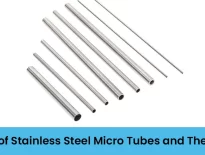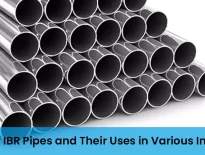Duplex steel fittings have risen to great heights in popularity in the industrial piping world owing to their great mechanical properties and corrosion resistance profiled by free boards. Most generally, they find applications in oil and gas, chemical processing, marine, and construction. What makes duplex stainless steel fittings so unique? This guide will cover composition, benefits, types, and application areas.
Duplex Steel Fittings are used to join pipes within the piping formwork. It includes various types of fittings available in many sizes and dimensions. Among them, Solitaire overseas has an extensive manufacturing and supplying capability to supply fittings made of duplex steel. In that regard, duplex steels are of special-notch type because, in metallurgy, both phases of steel exist, namely austenitic and ferritic. This gives duplex steel quite an edge because it renders them good corrosion resistance and strength.
Due to the material composition of the base metals, this steel type offers a variety of grades. Grade 2205 is the most frequently utilized pipe fittings in the duplex family. It presents an economical option in offering compression for pressure, temperature, and strength backing compared to any of the other duplex grades. Aside from the standard duplex grade, there are super grades and sub-grades as well. The ASTM A815 Duplex Fittings specify others along with their respective disciplines to fit under the category of duplex and super grades, such as fittings for Bleaching Equipment and for use in the Pulp and Paper Industry too where they operate under exceedingly high temperatures.
Types of Duplex Steel Fittings
Buttweld Fittings
Well-welded fittings form an elementary Zen of the high-pressure piping systems. They are utilized on piping systems to promote smooth fluid flow and ensure their structural integrity. Unlike their towel fittings, the buttweld fitting connected with a ballsy lock on the circumferences can’t be called such since a secure bonding is ensured by welding it straight onto the pipe. In their ambit are generally:
- Elbows (45 degrees, 90 degrees, 180 degrees): Used to change the direction of flow in any piping system.
- Tees: are used to distribute the fluid into more than two directions; therefore, they are connected among three lines.
- Reducers: (concentric and eccentric) help to size-down pipes and thereby create a flow.
- Caps and Stub Ends: Including caps and stub ends, are used to close off ends of piping or to secure a proper connection in flanged systems.
Forged Fittings
Forged fittings are made from duplex steel, which is treaded and shaped under high pressure. The mechanical properties of the material are improved with a greater degree of durability. These fittings here imply pulsing work within a great temperature and pressure regime.
- Socket weld fittings: A fitting known as socket welding is considered a high-pressure, small-diameter fitting capable of providing a leak-proof joint.
- Threaded fittings: These fittings possess internal or external threads, allowing for easy connection without welding.
- Couplings, crosses, and unions: These allow extension of the piping, making multi-directional connections, as well as quick and easy disconnection.
Pipe Fittings
Pipe fittings are one of the extremely important purposes in the direction of connecting or controlling or channeling flows in piping systems. Duplex steel pipe fittings are extremely corrosion and erosion resistant, making them highly suitable for many high-performance industrial applications.
- Flanges (slip-on, weld neck, blind, lap-joint, etc.): These connect one piece of pipe to another, or a pipe to other devices through a tightly bolted niche.
- Adapters and Nipples: It allows connection between pipes of different sizes or threading types.
To learn more about the Fittings, check out our comprehensive guide: The Ultimate Guide to Stainless Steel Fittings
Applications of Duplex Steel Fittings
Oil and Gas Industry – Operating within extreme working conditions that may consist of high pressure and corrosive environments, duplex steel fittings find extensive use in:
- Pipeline: Transport crude oil and natural gas over extensive distances.
- Platforms: Resist seawater corrosion and mechanical stress due to extreme conditions.
- Refineries: Process aggressive chemicals and withstand extreme temperatures.
Chemical and Petrochemical Processing – petrochemical and chemical facilities employ materials that resist many corrosive and acidic substances. Duplex steel fittings ensure safety and performance as they resist:
- Corrosive chemicals such as hydrochloric acid and sulfuric acid.
- High-Temperature Processes that endure thermal stress.
- Robust and leak-proof piping systems for process piping.
Marine Industry – The marine business demands a material that demonstrates great resistance to saltwater and abrasive marine conditions. Duplex steel fittings have found their application in:
- Shipbuilding: High resistance to pitting and crevice corrosion.
- Desalination Plants: Minimizing maintenance in harsh conditions with abundant chloride.
Power Plants – The generation of electricity requires materials that perform well at very high temperatures and very high pressures. Again duplex steel fittings are critical in:
- Heat Exchangers: Greatly improve thermal efficiency, show thermal fatigue resistance.
- Boilers: Perform well under high temperatures.
- Pipelines: They could tolerate changes in pressure and temperature at high pressure.
Pharmaceuticals and Food Processing – The leading areas of research into hygiene, safety, and corrosion are orthogonal to the choice of materials. It is this union that gives duplex steel fittings cause to stand in:
- Hygienic piping systems eliminate contamination and ensure their fitness under any regulation.
- Sterile condition: Smooth, nonreactive surfaces ensure the purity of the product.
- Corrosion resistance: Providing the necessary protection against cleaning and sterilization procedures.
Properties of Duplex Steel Fittings
High Tensile Strength – These Duplex steel fittings are much stronger and, therefore, last and endure high tensile stress. This property guarantees durability and reliability of use even in high-stress applications like offshore platforms, pipelines, and refineries.
Exceptional Corrosion Resistance Properties – Durable duplex steel fittings will not corrode easily. They are able to do so because they counter act
- Stress Corrosion Cracking: Good while moving through areas with constant stress and Chloride infiltration.
- Pitting and Crevice Corrosion: Working well for applications with seawater, acid environments, as well as the highly corrosive atmosphere.
- Durability Against Oxidation: They resist rust failing in temperature and within chemical application process settings.
High Fatigue Resistance – The cyclic load doesn’t affect the duplex steel fittings very much. Hence, they are good for use under high-pressure conditions. These properties find applications in:
- Pipelines in Oil & Gas: Subject to varied pressure alongside corrosive environments.
- Marine Applications: Due to cyclical pressure from waves and currents.
Good Toughness and Ductility – Though Duplex steel fittings possess great strength, they display outstanding toughness and ductility. As a result, they are fit for service even in the sub-zero temperature:
- Cryogenic Application: Performing excellently under frigid cold conditions without becoming brittle.
- Structural Components: A great mix of stiffness along with resistance to impacts.
Very High Thermal Conductivity – Duplex steel fittings are very good heat conductors, thus making them suitable in their operations in high-temperature applications:
- Heat Exchangers: Having efficient conducting properties that guarantee enhancement in heat exchange.
- Boilers & Power Plants: Relief on thermal stress along with enhancement in efficiency.
Improved and More Wear Resistant – Duplex steel fittings are retained with lower politics towards wear and abrasion, hence making them apt for use in:
- Mining and Material Handling Equipment: Reduction in degree of wear when mixing with abrasive materials.
- Industrial Machinery: Higher longevity and lower costs of maintenance.
Manufacturing of Duplex Steel Fittings
The manufacturing of duplex steel fittings involves several critical processes to ensure high quality and durability. These steps include:
- Raw Material Selection: High-quality duplex stainless steel is selected based on industry standards.
- Forging & Forming: The steel is heated and shaped into the required fitting dimensions.
- Heat Treatment: The fittings undergo annealing to enhance mechanical properties and corrosion resistance.
- Machining & Finishing: Precision machining ensures accurate dimensions, followed by surface finishing treatments.
- Testing & Quality Control: Rigorous inspections such as hydrostatic, ultrasonic, and mechanical tests are performed to ensure compliance with industry standards.
- Final Inspection & Packaging: The fittings are inspected for defects and securely packaged for safe transportation.
Specifications of Duplex Steel Fittings
Duplex steel fittings are manufactured according to various international standards to ensure reliability and durability in industrial applications. Some common specifications include:
Material Grades: UNS S31803, UNS S32205, UNS S32750, UNS S32760
Standards – End Connections:
- Buttweld (BW)
- Socket Weld (SW)
- Threaded (NPT, BSP)
- Flanged (RF, FF, RTJ)
To learn more about the Duplex, check out our comprehensive guide: What Is Super Duplex Material & Definition
Conclusion
With well defined standards Solitaire Overseas are sophisticated and reliable solutions which lasts for decades without any issue. It is available at a reasonable price in top markets of the country. We keep in mind the trust and legacy of our brand and then move forwards towards supply of our Duplex steel fittings. Choose us for excellent pipe fittings today!
FAQ :
What is duplex steel used for?
The duplex steel used for oil & gas industries, chemical & petrochemical processing and marine industry
Is duplex steel expensive?
Duplex steel is more expensive as compared to conventional stainless steel. The price of duplex steel depends on its grade, quantity, and location.
What are the advantages of duplex steel?
Duplex stainless steel has many advantages, including high strength, corrosion resistance, and cost-effectiveness.


